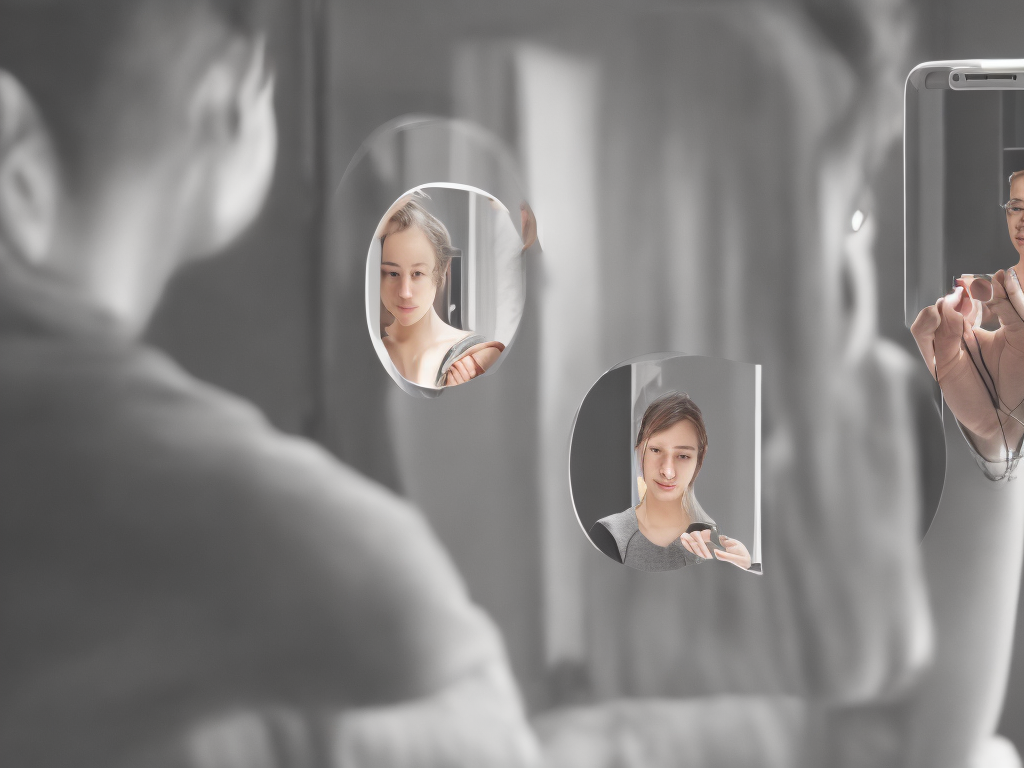
When we hear the word "image," we often think of something that we can see or perceive with our eyes. But did you know that images can exist in multiple forms? Specifically, there are two main types of images: real and virtual. While these terms may sound like fancy scientific jargon, they describe fundamental concepts that play a role in everything from everyday mirror reflections to the technology used in virtual reality.
The difference between real and virtual images comes down to one key aspect: where the light rays that create the image converge or diverge. To understand this concept more fully, let's dig a little deeper into each type of image.
Real Images
As its name suggests, a real image is an image that can be projected onto a surface or captured on a photographic film. The key characteristic of a real image is that the light rays that make up the image converge at a single point after passing through the object. This point is known as the focal point or the focal plane.
One simple example of a real image is the image formed by a convex lens. When light rays pass through the lens, they converge at the focal point on the opposite side of the lens. This creates an upside-down image of the object being viewed.
Likewise, a mirror can also create a real image. When light bounces off a mirror, it reflects back in a way that causes the light rays to converge at a certain point behind the mirror. If an object is placed at just the right distance from the mirror, a real image will be formed on the other side of the mirror.
Real images have a few key characteristics that help us distinguish them from virtual images. First, real images can be projected onto a surface or captured on film. This means that we can physically interact with the image in some way.
Second, real images are always inverted. This means that the top of the object being viewed appears at the bottom of the image and vice versa. However, this inversion can be corrected through the use of additional lenses or mirrors.
Finally, real images can be magnified or shrunk depending on the distance between the object and the focal point. For example, if an object is placed farther away from the focal point of a lens, the resulting image will be smaller.
Virtual Images
A virtual image, on the other hand, is an image that cannot be projected onto a surface or captured on film. Instead, the light rays that create the image appear to diverge from a single point, as opposed to converging at a single point with a real image.
One of the simplest examples of a virtual image is the image created by a plane mirror. When you stand in front of a mirror, you see an image of yourself that appears to be behind the mirror. However, you cannot project this image onto a surface or capture it on film.
Similarly, virtual images can also be created by lenses, but in a different way than with real images. With a virtual image formed by a lens, the light rays appear to diverge from a single point on the same side of the lens as the original object. This means that the virtual image cannot be projected or captured, as the light rays never actually converge at a focal point.
Virtual images have some key differences from real images. For one, they cannot be projected or captured in the same way as a real image. Instead, virtual images can only be viewed directly (as with a plane mirror) or through a device such as a virtual reality headset.
Additionally, virtual images are always upright. Unlike with real images, there is no inversion of the image when it is created by a mirror or lens.
Finally, virtual images cannot be magnified or shrunk in the same way as real images. While you can adjust the magnification of a real image by changing the distance between the object and the focal point, virtual images do not have a focal point, so they cannot be adjusted in the same way.
Applications of Real and Virtual Images
Understanding the difference between real and virtual images has many practical applications. Some of the most common uses of real and virtual images include:
- Microscopes: Microscopes rely on lenses to magnify tiny objects, such as bacteria or cells, by creating a real image that can be viewed through the eyepiece.
- Telescopes: Telescopes use lenses and mirrors to create real images of objects in space, allowing us to see planets, stars, and other objects from a distance.
- Cameras: Cameras capture real images on film or digitally, allowing us to preserve memories and document the world around us.
- Virtual Reality: Virtual reality goggles use lenses to create virtual images that appear to be in front of the user, allowing them to interact with simulated environments and objects.
Conclusion
Real and virtual images may seem like abstract concepts, but they are a fundamental part of how we perceive the world around us. Understanding the difference between the two can help us understand everything from why we see ourselves in a mirror to how the latest virtual reality technology works. Whether we're looking through a microscope or exploring a virtual world, the concepts of real and virtual images help us see the world in new ways.
 Self-Instruct
Self-Instruct